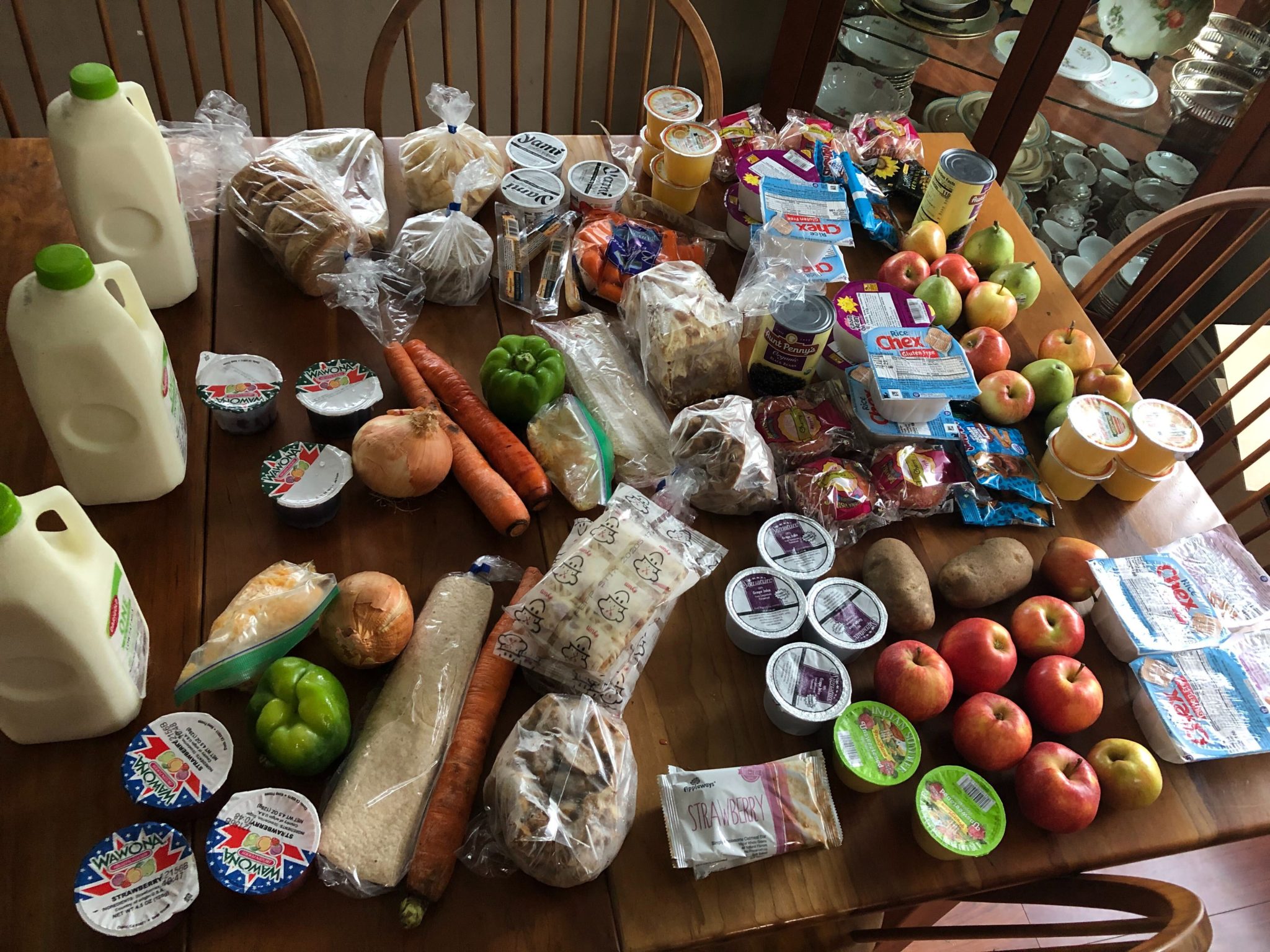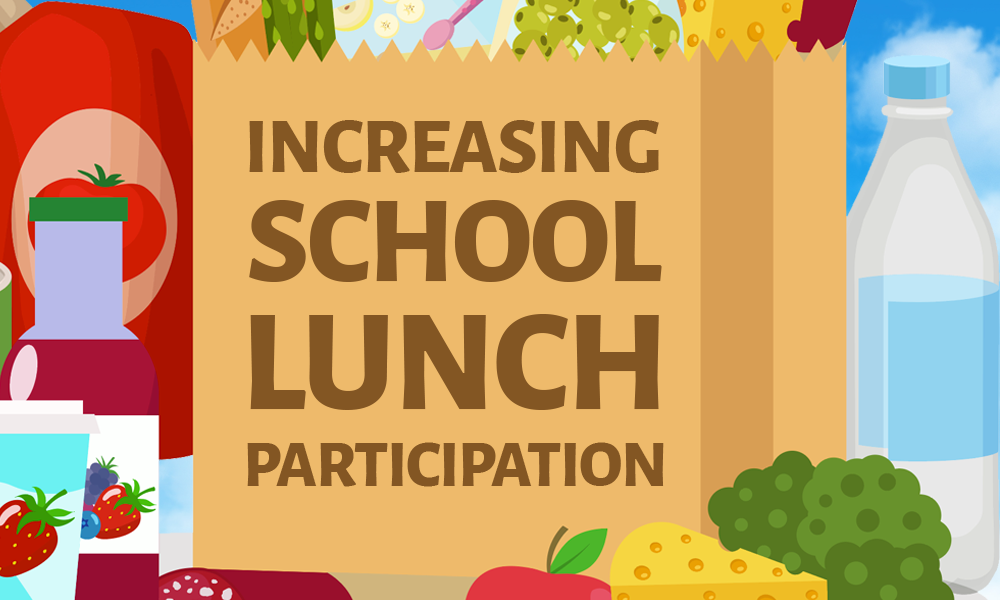Here at Health-e Pro, one of our teammates sent us a picture: food from her kids’ school for meals for the week. We couldn’t believe what we were seeing–a table full of great, healthy food for her kids for the next seven days, from one pickup. Luckily, this district is a Health-e Pro customer, so we were able to reach out and learn more about the incredible program they’re running. Read on to learn more about how Burlington went to a one-day-a-week pickup program, increased participation, and managed food and labor costs well. We’ve also included resources to help your district get started.

So many districts are doing daily pickups or twice weekly pickups. What factored into deciding on a weekly pickup for seven days and fourteen meals?
Mark Dalton came to the Burlington School District as Food Services Supervisor at the start of this school year in 2020-2021 after previously being at Bellingham School District. He was at Bellingham when Covid-19 hit, and he saw that the one-day-a-week-pickup, fourteen-meals-in-a-week program worked really well there and parents really liked it. It was convenient for families to pick up only once a week and it increased participation. While it meant they couldn’t provide a hot meal every day, that was outweighed by the fact they could do 14 meals for each kid each week instead of just a few.
What prevents more districts from serving seven days a week? What are some challenges?
In one word: storage. Keeping inventory on hand of fresh foods for 14 meals per student can require a lot of refrigeration and storage space. But Mark detailed several ways where he was able to work around that through creative procurement. For one, he found local vendors and providers. Rather than ordering everything through their distributor, he found local vendors who could offer items when he needed them.
For example, he made a deal with a local milk bottler. Initially when he asked them for half gallon bottles, they said they couldn’t pull it off. They came back later and said they’d figure out how to make it work. Working with a local vendor might be a good option: maybe they can deliver right when product is needed so storage and refrigeration isn’t an issue.
One of the lessons for Mark during the last eight months is that you can’t rely on just one distributor for your food. Work with as many local partners as you can to make sure you can count on the right food at the right time. Support your local economy, your local distributors, and make sure you’re not at the behest of a large supply chain.
Another challenge has been assembly and space. For packing purposes, Burlington started using a hallway to pack the boxes on long tables, needing the hallway’s sprinkler system so the boxes wouldn’t be a fire hazard stacked up. They started packing the boxes at one end of the tables with the heavy stuff–fruit, then cans, then lighter items like breads. From there, they put the boxes on pallets, wrapped the pallets, and then took them out for pickup and delivery.
How have they been able to keep some food costs down?
As an example, Mark planned teriyaki chicken meals. They used commodity pre-cooked chunk chicken, mixed it with carrots, broccoli, and sauce, and froze it together in a bag. Instead of ordering bulk rice, he met with a local grocery outlet and bargained with them to get one-pound bags of rice. They also purchased the teriyaki sauce, but everything outside of the rice and sauce was purchased using DOD or commodity dollars. Some commodity dollars can be turned into DOD dollars, and that can go towards fresh fruits and vegetables. That’s one of the ways Burlington was able to keep the costs way down for menu items, so they can add other items like breakfast foods and snacks.
What are other tips for increasing participation?
Mark had two main areas of advice for increasing participation: food quality and marketing. He stated that it’s a bit easier to upgrade the quality of your food in a normal, non-Covid year. In the past, he’s worked with the Chef Ann Foundation for a grant to redesign the central kitchen that helped in producing higher-quality food for students. In this Covid year, the multi-day meal kits have been the key to increasing participation, along with marketing.
In order to promote his program, Mark made sure the message got out to the parents. Where many districts are sending out several email messages a day, it can be hard to cut through all the information and make sure the vital details about your school nutrition program are seen. Mark ensured that the word got out via email, website, and social media.
At Health-e Pro, we took it a step further and created several ready-to-use templates where you can insert your logo, adjust the colors to match your district’s, and add any details for delivery or pickup to make sure your message gets seen. Download them here!
How are meals being picked up/delivered?
Burlington provided two options for pickup and delivery. Pickup is one day a week between 4:30 and 6:00pm so parents can drive by and pick up the meals. Burlington has six school sites and their central kitchen. They’re offering meals at each of the school sites as well as the central kitchen for drive-through pickup.
They’re also offering “delivery” by taking meals by the truckload out to the hardest-hit, lowest economic regions of the county. Interestingly, the combination of delivery and central kitchen pickup are doing higher numbers than those picking up at the individual schools!
What was the result?
With 14 meals being picked up for each kid each week, participation jumped, as well as reimbursement. Participation jumped around 70% and revenue increased dramatically. That’s a win-win for the district for several reasons: they were able to feed kids, they were able to stay financially solvent(thanks to reimbursement), and they were able to keep their staff employed. In fact, one employee said she was so grateful for the opportunity to continue as a kitchen staffer since her husband lost his job during the pandemic. Not only was she able to keep her job, but her daughter–attending a school in the district–was also getting 14 meals each week.
Another really interesting result from this shift to weekly bulk meals has been costs. With all foodservice employees working on packing the boxes for meals, Burlington has seen improved efficiency around labor hours, while keeping everyone employed. By keeping food costs low by using commodity or DOD dollars to buy food, and streamlining packaging processes to keep Meals Per Labor Hour efficient, Burlington has been able to put the district in a really good position moving forward. Not only is their program profitable, but they can make a strong case to keep all their staff and bring in more when circumstances allow.
Additionally, the Board called Mark and said they had received great feedback from the community and told him he was doing a great job. When the board is telling you you’re doing great after only six weeks on the job, you know you’re making a difference.
Well done, Mark and Burlington-Edison!
Check out these pictures from when we visited Burlington’s operation!
If you’d like a couple ready-made documents that you can send out to your parents and students, letting them know the value of these free meals, fill out the form below and we’ll follow up with the PDFs.

